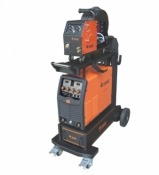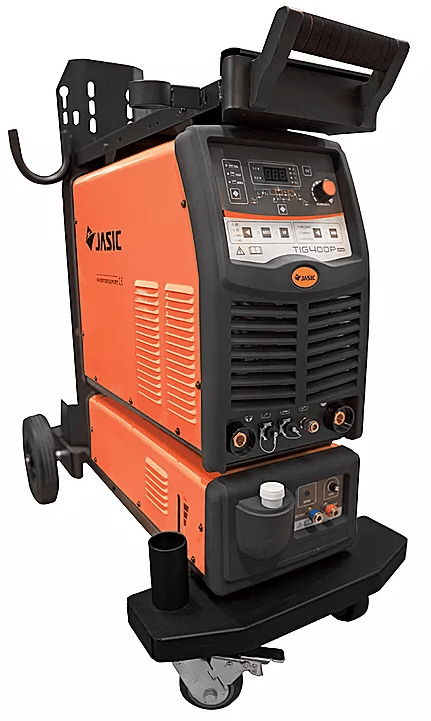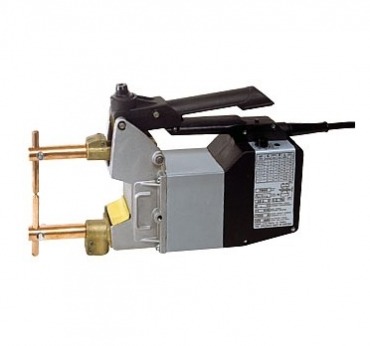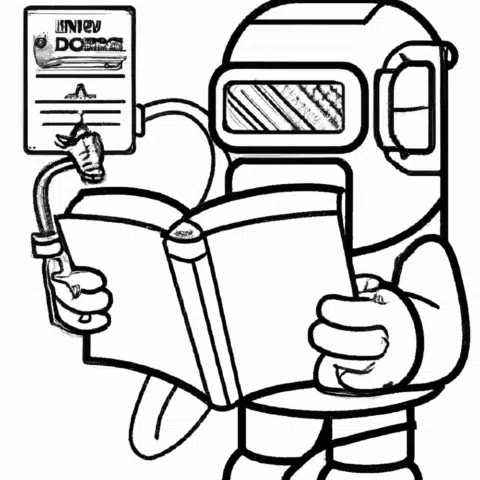In this guide:
Welcome to our welding machine guide! In this guide, we will cover the essential elements you need to understand in order to select the right welding machine for your project. We will discuss the importance of amperage and duty cycle, the different types of welding materials and thicknesses, the various types of welding equipment and power supplies, and how to choose a suitable welding machine for your specific needs. Whether you’re a professional welder or a DIY enthusiast, this guide will provide you with the knowledge and tools you need to make an informed decision when it comes to welding equipment. Let’s get started!
Understanding Amperage and Duty Cycle
Choosing the right welder can be a daunting task, but two key factors to consider are amperage and duty cycle. Amperage, also known as current, is a measure of the amount of electricity flowing and helps determine the heat generated during the welding process.
As a general rule, for every .001 inches of material thickness, you’ll need about 1 amp of output. For example, if you’re welding a piece of metal that is .125 inches thick, you’ll need about 125 amps of power.
On the other hand, duty cycle is the amount of time the welder can continuously produce heat before it needs to cool down. For example, if a welder has a 40% duty cycle rating, it can weld for four minutes out of a ten-minute period before needing a six-minute break. The duty cycle rating may vary based on the machine’s specifications and the type of welding process used.
To determine the appropriate duty cycle for your specific welding needs, consider the following:
- If you’re welding in a home garage or shop setting, a machine with a lower duty cycle rating will usually suffice.
- If you’re working in a light manufacturing or fabrication production setting, a welder with a higher duty cycle rating (like 60%) may be more appropriate.
It’s important to balance the amount of time you’ll be welding with the machine’s need to cool down. With a little research and consideration, you’ll be able to find the perfect welder for your specific needs.
Understanding Welding Materials and Thickness for Your Project
When it comes to welding, it’s essential to understand the types of materials and thicknesses you’ll be working with most often. This will help you choose a welder with the most suitable amperage.
For example, if you’re working on old motorcycles or fabricating new parts, you’ll typically be welding materials that fall in the 1/16 inch to 1/8 inch range. Auto body repair usually calls for thicknesses of 3/16 inch or less. If you’re working on thick structural components, you’ll be dealing with materials that are over 3/8 inch.
For general repairs or heavy equipment, you can expect to work with materials that range from 3/16 inch to 1/4 inch. And for smaller projects like bicycles, lawnmowers, or tube frames, materials will typically be around 1/16 inch.
By understanding the materials and thicknesses you’ll be working with, you’ll be able to make informed decisions on the type of welding process to use and the appropriate equipment.
The table below shows common materials and thickness for the most common welding processes:
| Welding Process | Common Materials | Thickness |
|---|---|---|
| TIG | Aluminum, Stainless Steel, Copper, Titanium | Up to 3/8″ |
| MIG | Steel, Aluminum, Stainless Steel | Up to 1/2″ |
| Spot | Steel, Stainless Steel, Aluminum | Up to 1/8″ |
| Stick | Iron, Steel, Stainless Steel | Over 3mm |
Note: The thickness mentioned in the table is approximate, it might vary depending on the welder’s capability and the skill of the operator.
Understanding Welding Equipment and Power Supplies
When it comes to your workshop or garage, the power supply you have can have a significant impact on the welding equipment you can use. If you are limited to a standard domestic 240V mains supply, you’ll need to consider the size of the welding power source you choose. A machine up to 110-130 amps will typically work with a standard 13 amp 3 pin plug. However, if you need a larger machine, you’ll need a 16 or 32A supply, like what’s required for an electric oven or hob. Welding inverters above 250 amps will require a 3 phase power supply, which can typically be found in industrial units.
Don’t fret, if you’re determined to have a 3 phase supply in your home, it’s possible to have one installed by an electrician. The cost of installation may be offset by energy savings over time, especially if you plan on using the welder frequently.
When it comes to power sources for welding, there are two main options: the older transformer machines or the newer, more popular welding inverters. Here’s a quick breakdown of the pros and cons of each:
Inverter Welders
Inverter welders are a game-changer in the world of welding. With their advanced technology and sleek design, they offer a variety of benefits over traditional welders. These machines often come equipped with extra functions like infinite wire feed speed control, making it easy to fine-tune your welds. They’re also much lighter and smaller in size, thanks to their lack of heavy transformers. And, some even have power factor correction (PFC) for extra energy efficiency.
One of the biggest advantages of inverter welders is their efficiency. They use modern electronics to convert incoming current to suitable welding current, meaning they lose less heat and are more efficient than traditional machines. This also makes them a lot more portable, as they’re often no bigger than a lunchbox.
In addition to their efficiency, inverter welders also have a range of digital functions for arc control. They use software and hardware to control arc stability, frequency, arc cone width, bead profile, starting and ending amperage, and more. Many even have a digital display to help you navigate all these settings.
Of course, like any machine, inverter welders have their pros and cons. One downside is that they may have a lower life expectancy and can be more challenging to repair. Additionally, their sensitive electronics make them more delicate and susceptible to damage.
Overall, inverter welders are a great choice for those looking for a lightweight, portable, and efficient welding machine. With their many advanced features, they’re sure to make your welding projects a breeze.
Transformer Welders
Transformer welders are a well-established piece of equipment in the welding industry. As the name suggests, these machines use large and heavy transformers that have been used in heavy industry and welding shops for decades. While the technology may be older, it is also known for its reliability and durability.
One advantage of using a transformer welder is that they are easy to repair and less susceptible to dust ingress compared to newer inverter-based machines. However, they do tend to have less adjustability, with step-regulated controls instead of the infinite control offered by an inverter.
On the downside, transformer welders can be quite heavy and bulky, making them difficult to move around. This can also lead to needing longer welding leads, which can result in a drop in current. Additionally, their arc may not be as stable as inverters and they have a limited number of functions for arc control.
In conclusion, transformer welders are a solid choice for those who prefer time-tested technology, reliability, and ease of repair. However, they can be heavy and bulky, have a limited number of functions for arc control and tend to have a higher price point.
Choosing a Suitable Welding Machine
When choosing the right welder, it’s important to understand the key considerations such as amperage and duty cycle. Amperage, or current, helps determine the heat generated during the welding process, and duty cycle is how long the welder can keep that heat going before it needs a break. Additionally, it’s essential to know the types of materials and thicknesses you’ll be working with most often, as this will help you choose a welder with the most suitable amperage.
In terms of power supply, it’s essential to be aware of the power supply you have as this will determine the welding equipment you can use. If you’re limited to a standard domestic 240V mains supply, you’ll have to be careful about the size of the welding power source you choose. In general, a machine up to 110-130 amps will work with your standard 13 amp 3 pin plug. But if you want to go bigger, you’ll need a 16 or 32A supply, like what’s required for your electric oven or hob. Welding inverters above 250 amps will require a 3 phase power supply, which can be found in industrial units.
In conclusion, the key is to balance the amount of time you’ll be welding with the machine’s need to cool down and find the perfect fit for your specific welding needs. With a little research and consideration, you’ll be well on your way to finding the perfect welder for you!
MIG Welding Machine Considerations
When buying a MIG welding machine, it’s important to consider the following factors:
- Power source compatibility and suitability for the types of materials you will be welding
- Duty cycle, or the amount of time the machine can be used continuously before needing to cool down
- Amperage range, which should be able to handle the thickness of the material you will be welding
- Wire feed speed, which should ideally be adjustable to accommodate different thicknesses of metal
- Weight and portability, if the machine will be transported to different job sites or moved around your shop
- Brand reputation and warranty

MIG Welders
TIG Welding Machine Considerations
When looking to purchase a TIG welding machine, it’s important to consider the following factors to ensure that the machine you select is best suited to your specific needs and requirements:
- Power source compatibility: The machine should be able to handle the type of power supply you have and should be suitable for the types of materials you will be welding.
- Duty cycle: The duty cycle of a TIG welding machine is the amount of time it can be used continuously before needing to cool down. Make sure to choose a machine with a high duty cycle if you plan to use it for extended periods of time.
- Amperage range: The machine should have an amperage range that can handle the thickness of the material you will be welding.
- Heat input control: TIG welding requires precise control of the heat input and look for machines that have a precise amperage control and a foot pedal or finger trigger for welding amperage control.
- Weight and portability: Consider the weight and size of the machine if you plan to take it to different job sites or move it around your shop.
- Brand reputation and warranty: Look for a reputable brand and a warranty for your machine
- Cost and budget: Compare the cost of different machines and choose the one that fits your budget

TIG Welders
Spot Welding Machine Considerations
When in the market for a spot welding machine, it is crucial to keep in mind certain key factors to ensure that the machine you choose is the right fit for your specific welding needs and requirements. Some of the key considerations that you should keep in mind include:
- Welding capacity: The machine should have the capability to weld the thickness of the materials you will be working with.
- Electrode force: The machine should have adjustable electrode force to accommodate different thicknesses of metal, this will give you the flexibility to work on different projects.
- Welding time: Consider if you need a machine that can weld quickly or one that has a longer welding time for more delicate or intricate work.
- Cooling system: Look for a machine with a built-in cooling system, this will help to keep the electrodes and transformer cool during operation to avoid overheating and prolong the life of the machine.
- Portability: If you plan to use the machine at different job sites, choose a machine that is easy to move around, or has wheels for easy transportation.
- Brand reputation and warranty: Look for a reputable brand, with a good customer service and warranty for your machine, this will give you peace of mind and a guarantee that your machine is backed by the manufacturer.
- Cost and budget: Compare the cost of different machines and choose the one that fits your budget, while also meeting your welding needs and requirements.

Spot Welders
Stick Welding Machine Considerations
When in the market for a stick welding machine, it is essential to consider certain key factors to ensure that the machine you choose is the perfect fit for your specific welding needs and requirements. Some of the key considerations that you should keep in mind include:
- Power source compatibility: The machine should be able to handle the type of power supply you have and should be suitable for the types of materials you will be welding.
- Amperage range: The machine should have an amperage range that can handle the thickness of the material you will be welding.
- Duty cycle: The duty cycle of a stick welding machine is the amount of time it can be used continuously before needing to cool down. Make sure to choose a machine with a high duty cycle if you plan to use it for extended periods of time.
- Portability: Consider the weight and size of the machine if you plan to take it to different job sites or move it around your shop.
- Brand reputation and warranty: Look for a reputable brand, with a good customer service and warranty for your machine, this will give you peace of mind and a guarantee that your machine is backed by the manufacturer.
- Cost and budget: Compare the cost of different machines and choose the one that fits your budget while also meeting your welding needs and requirements.
- Arc force control: Look for a machine with an adjustable arc force control, this will allow you to fine-tune the arc and make it easy to strike and maintain a stable arc and produce high-quality welds.
- Hot start: Some machines come with a feature called hot start that makes it easier to strike the electrode on the workpiece, this will save you time and effort when starting a new weld.

Arc/MMA Welders
In conclusion, we hope this guide has been a valuable resource in assisting you in your journey to select the perfect welding machine. We’ve covered the important topics such as amperage and duty cycle, welding materials and thickness, welding equipment and power supplies, and how to make the best choice for your project. We hope that you’ve found this guide informative, easy to understand and helpful in guiding you through the process of selecting a welding machine that will meet your needs and expectations. As you go through this process, remember that you can always contact us to help you choose the most suitable welding machine for your needs.
Thanks for reading and happy welding!




